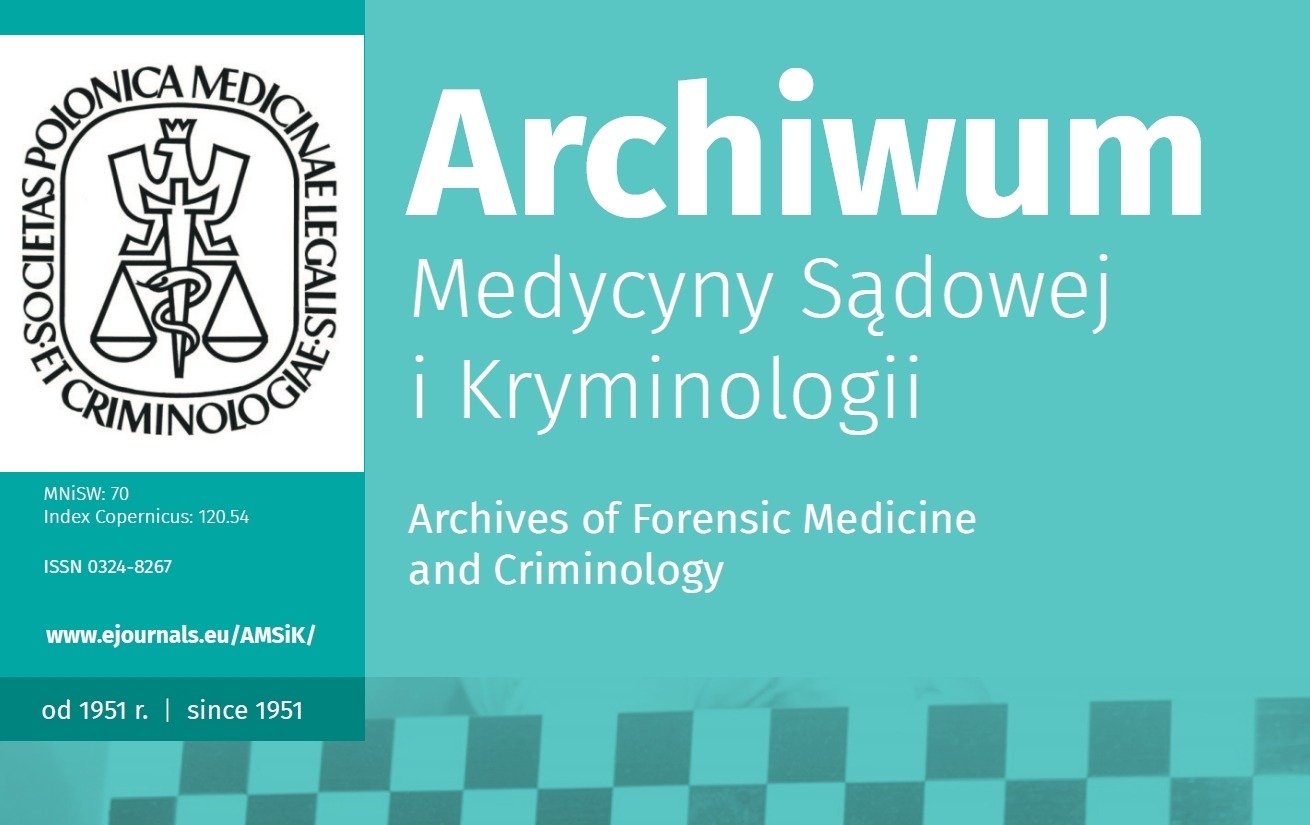Arch Med Sąd Kryminol 2015; 65 (4): 248–259 DOI: 10.5114/amsik.2015.61026 Sara Sabatasso1 , Francesco Doenz2 , Alain Bass3 , Katarzyna Michaud1 , Patrice Mangin1 , Silke Grabherr1
Wielofazowa pośmiertna angiografia TK w badaniu patologii naczyniowych i zmian w anatomii naczyniowej – szczególny przypadek „patchworku naczyniowego”
Application of multi-phase postmortem CT-angiography in the investigation of vascular pathology and modified vascular anatomy – a special case of “vascular patchwork”
1 University Center of Legal Medicine, Lausanne-Geneva, Switzerland
2 CHUV, Service de radiodiagnostic et radiologie interventionnelle, Lausanne, Switzerland
3 Haute Ecole de Santé Vaud, Lausanne, Switzerland
Streszczenie
Wielofazowa pośmiertna angiografia TK (MPMCTA) jest badaniem rutynowo wykorzystywanym w Uniwersyteckim Centrum Medycyny Sądowej w Lozannie-Genewie przy analizie przypadków zgonów urazowych i naturalnych. W pracy opisano przypadek pacjenta z zespołem Leriche’a oraz licznymi interwencjami sercowo-naczyniowymi w wywiadzie, obejmującymi m.in. wszczepienie pomostu pachowo-dwuudowego. Wykorzystując stosunkowo nową technikę MPMCTA, w ciele pacjenta uwidoczniono liczne zmiany sercowo-naczyniowe i stwierdzono, że nie mają one związku z przyczyną zgonu. Opisany przypadek wykazał przydatność MPMCTA przy badaniu pośmiertnym osób z podejrzewanymi patologicznymi zmianami naczyniowymi, jak również przewagę MPMCTA nad konwencjonalną
sekcją zwłok przy analizie zmian w anatomii naczyniowej. Był to pierwszy przypadek wykonania MPMCTA z iniekcją roztworu środka kontrastowego do protezy naczyniowej.
Słowa kluczowe: obrazowanie w praktyce sądowo-lekarskiej, angiografia pośmiertna, zespół Leriche’a, proteza naczyniowa.
Abstract
Multi-phase postmortem CT-angiography (MPMCTA) is used routinely for investigating cases of traumatic and natural death at the University Centre of Legal Medicine, Lausanne-Geneva. Here, we report the case of a patient affected by Leriche syndrome, with a history of numerous cardiovascular interventions, including an axillobifemoral bypass. The multiple cardiovascular changes presented by the patient were visualised by this relatively new technique and they were shown not to be related to the cause of death. This case demonstrated the utility of MPMCTA for investigating bodies with suspected vascular pathologies. Moreover, it revealed the advantages of MPMCTA over conventional autopsy to investigate a modified vascular anatomy. This was the first case in which MPMCTA was performed by injecting a contrast-agent mixture into a vascular prosthesis.
Key words: forensic imaging, postmortem angiography, Leriche syndrome, vascular prosthesis
Pełna wersja w .pdf
